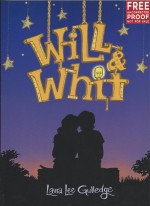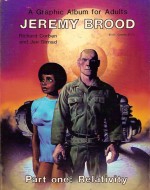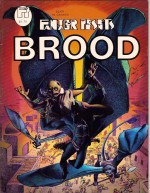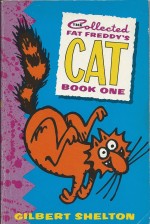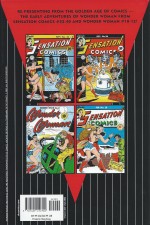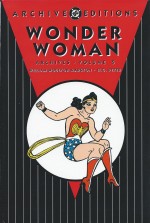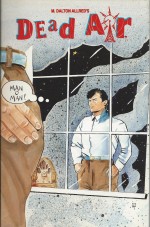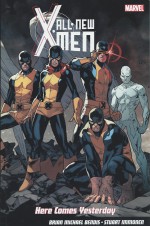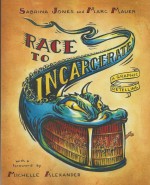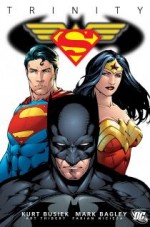
By Kurt Busiek, Fabian Nicieza, Mark Bagley, Scott McDaniel, Tom Derenick, Jerry Ordway & various (DC Comics)
ISBN: 978-1-4012-2277-2
DC’s mythologizing of its most renowned character properties saw their ultimate expression in the ambitious if overly-convoluted year-long publishing event Trinity which revealed the unexpected cosmic significance of the relationship between Superman, Batman and Wonder Woman.
The series explored the metaphysical underpinnings of the DC Universe through 52 weekly instalments, split into a lead chapter with a connected ancillary episode intended to ultimately combine into a complex web of narrative encompassing the entire multiversal cosmos.
This initial volume – of three, natch – collects issues #1-17 of the omniversal odyssey (from June to October 2008) and was conceived and written by Kurt Busiek, with Fabian Nicieza co-scripting the sidebar stories. The art on the primaries was by Mark Bagley& Art Thibert, with Scott McDaniel, Tom Derenick, Mike Norton and others tag-teaming on the back-ups…
The reality-busting drama begins with ‘Boys and their Games…’ in the heart of the cosmos where an ancient, immensely powerful and obsessive being struggles to break free of a vast all-encompassing prison. Meanwhile in Keystone City, as their heroic associates take care of the usual distractions, old friends Clark Kent, Bruce Wayne and Diana Prince meet for breakfast and discuss the distressing fact that they have all been enduring the same disturbing dreams of a monster escaping its imprisonment…
The first back-up tale ‘In the Morrows to Come’, by Busiek, Nicieza, McDaniel & Andy Owens, casts a light on Castle Branek where dark witch Morgaine Le Fey is accosted by a mysterious mortal dubbed Enigma who offers her the chance to rewrite Reality in her favour, tempting her with glimpses of other Earths and unfamiliar heroes. The first thing they need to do, however, is find a third co-conspirator and then seek out and capture a young girl with a strange knack for reading Tarot cards…
As the conspirators’ plans come together, reality begins to warp and wobble around Superman, Batman and Wonder Woman in ‘A Personal Best at Giant Robot Smashing’ (Busiek, Bagley & Thibert) but the heroes are proving remarkably resilient in the face of the bizarre and deadly outbreaks. Things are tougher for Green Lantern John Stewart in ‘It’s Gonna Throw the Car’ (Busiek, Nicieza, Derenick & Wayne Faucher) as alien powerhouse Konvikt and his diminutive mouthpiece and legal advocate Graak crash to Earth and go on a rampage.
Before long the unstoppable ETs are thrashing the entire Justice League in ‘Kplow’ (Busiek, Bagley & Thibert) and only the big three are left to stop them… until the big bruiser decks Superman… Meanwhile ‘Earth to Rita’ (Busiek, Nicieza, Norton & Jerry Ordway) reveals how street Tarot reader Marguerita Covas starts getting some very strange readings even as she realises her predictions have been misused by a local gangbanger.
However when the superstitious thug tries to abduct Rita to secure her exclusive services, concerned citizen Jose Delgado steps in too late and finds her dazed and reeling near a pile of dismembered gangstas. Something far more dangerous than the urban vigilante called Gangbuster is watching over the baffled clairvoyant…
The spectacular struggle against the fully amok Konvikt is going badly, prompting Batman to break off to investigate the aliens’ arrival point in ‘Caped Simoid Thinks So, Hm?’ (Busiek, Bagley, Thibert). During his absence a secretive new player makes use of the melee to surreptitiously brand Wonder Woman with a mystic sigil, whilst ‘World-Something…’ (by Busiek, Nicieza, Norton, Ordway, McDaniel & Owens) reveals how Rita’s dreams contact another alien monster. The bloodthirsty Despero is mercilessly eradicating the forces of his stellar rival Kanjar Ro and, although she doesn’t know how or why, Rita is painfully aware that her foresights will become fact, affecting her and the entire Earth…
‘Great. Now He’s Holding His Breath.’ (another BBT production) sees the defeat of Konvikt by Batman, who also captures the mystic Howler which branded Wonder Woman. Miles away Rita’s Tarot face cards undergo a bizarre transformation, whilst things get hot for her self-appointed bodyguard Delgado as hired super-freaks Blindside, Throttle and Whiteout attack the ‘Knight in Shiny Armor’ (Busiek, Nicieza, Norton & Mark Farmer) to seize the tarot-reader…
Barely escaping, the hero and his charge flee, but Tarot is almost oblivious to her personal peril: all she can see is that the pictures on her cards keep changing…
‘Truth, Justice & the American Way…’ follows the recovering Trinity of heroes through the visions of the ever-evolving Tarot. Her attempts to divine the meaning and significance bear no fruit until a horde of Howlers overpower Gangbuster and drag the girl away. Just as ‘Almost’ (Busiek, Nicieza, McDaniel & Owens) shifts focus to Hawkman, as he defeats the seductive Nocturna , the reincarnated warrior stumbles onto the bloodied and brutalised Delgado who is obsessively searching for Rita. His hunt has taken him to StonechatMuseum – where her old Gangsta associates are stealing ancient artefacts – and into accidental combat with the Winged Wonder.
Once the dust settles and amends are made, the two heroes confer and learn that other relics are being taken from museums all over the world…
With odd incidences of threes occurring everywhere, the League start researching and discover a link to the “primal creation energies of the universeâ€. A check on the Cosmic Egg holding captive the rogue Guardian of the Universe Krona proves a dead end, but the Amazon’s brand has changed shape and ‘A Third Symbol Now’ is revealed just as Hawkman and Gangbuster arrive.
Soon the Pinioned Paladin’s millennia of knowledge and Batman’s deductive ability have reasoned out a link to Ancient Egyptian Tarot rites and discovered that an army of the Dark Knight’s old enemies have been hired to steal pertinent items and relics for an unknown client…
And far across the galaxies Morgaine and Enigma appear to Despero and offer him an equal partnership in controlling all that is…
In ‘Away from Creation’ (Busiek, Nicieza, Derenick & Faucher), John Stewart gives new Firestorm Jason Rausch a history lesson on Krona, who brought evil into the universe through his hunger for forbidden knowledge, unaware that the rogue Guardian and the Cosmic Egg that holds him are now in the possession of the triumvirate of universal usurpers…
Back on Earth ‘Have You Tied Him Up, Yet?’ finds Batman fighting off an attempt to brand him with a sigil as a new force of super-foes is formed by the still-unidentified masterminds. Atomic Furnace Sun-Chained-in-Ink, lovelorn super-ape Primat, eerie Trans-Volitional Man and the flamboyant Swashbuckler have their ‘Dreams of Power’ (art by McDaniel & Owens) as do the exultant Morgaine and her two comrades in re-Creation…
Overcoming the Howler pack assaulting him, the Dark Knight notices that he is acting out of character. All of the Trinity are slowly assuming each others attributes and attitudes, but this hasn’t stopped him deducing who is behind the Tarot-related plot in ‘Crumbs in the Forest’ (still Busiek, Bagley & Thibert) but before he can act a global crisis diverts the JLA’s attentions and forces the team to travel to another dimension, leaving Barbara Gordon, AKA digital information-wizard Oracle, to coordinate Batman’s network of Gotham-based champions on Earth by ‘Making the Pieces Fit’ as a series of macabre and surreal robberies mark the second part of the Dark Trinity’s scheme…
Anti-matter alternate metahumans the Crime Syndicate of Amerika have often battled the JLA but after their last clash their planet, – a polar opposite of ours where Evil, not Good, is dominant, was devastated by a super weapon called the Void Hound.
In ‘Rough World’ the villains were revealed to have abducted humans from many other Earths as a slave force intended to rebuild and repopulate the shattered world. However, as the Justice League arrived to rescue the victims, Superman became increasing infuriated and unstable…
On our Earth, the Dark Trinity’s plan continued to unfold as Robin and Nightwing clashed with Primat in ‘Maybe She Doesn’t Like Concrete?’ and Oracle got an inkling of what the bizarre scavenger hunts were actually for…
‘Distinguished Visitor’ saw the battle in the Anti-Universe seesaw dramatically with each side gaining and loosing ground whilst ‘The Next Step’ (Busiek, Nicieza, Derenick & Faucher) found Hawkman and gangbuster seemingly lose a battle but win the war against Primat and her esoteric allies, after which ‘100101010’ added a new wrinkle to the inter-dimension struggle as GL Stewart was revealed to have been possessed by the devastating Void Hound, and back here reformed villain Edward Nigma investigated the Tarot thefts and found himself accused of being the man behind the mask in ‘Riddle Me This’ from Busiek, Nicieza, Norton & Karl Kesel…
‘That Was a Sonic Boom’ revealed the League’s secret weapon in their war against the CSA, whilst ‘Drop the Coffin and Surrender’ (illustrated by Derenick & Faucher) saw a showdown between Hawkman, Gangbuster and the odd squad turn into an all-out clash involving the Outsiders, Justice Society and Teen Titans which went catastrophically awry when the Ink Chaining the Sun was atomically disrupted…
In the Anti-Matter realm the JLA’s victory provoked global anarchy and chaos which their attempts to rectify only exacerbated. However, ‘So What Now?’ also forced the enigmatic Enigma to reveal some of his many secrets, but when the victorious heroes gratefully returned to their own world, Superman had been sigil-branded. Dark Trinity: 2, Heroes 0…
With Sun-Chained-in-Ink literally in meltdown, ‘Let the Burning Begin’ (Derenick & Faucher) almost saw Earth’s last sunrise until Supergirl and Geo-force managed to shift the threat into deep space, whilst half a world away Superman, Batman and Wonder Woman tracked down Morgaine, Despero and Enigma for a climactic confrontation in ‘And I Finally See It’ but, even with almost every hero on Earth beside them, things did not go according to plan in ‘A Bit of Overkill’ (Busiek, Nicieza, McDaniel & Owens) and
‘We’ll Finish Things Here’ saw the conniving plotters win the day…
Scattered to the Winds’ (art by Norton & Ordway) found the helpless Rita come into her terrifying dormant powers just as Morgaine was ultimately victorious, and the heroic Trinity who inadvertently dictated the Shape of Reality vanished in ‘But So No Longer’ by Busiek, Bagley & Thibert…
As the universe altered into a new and unknown configuration, the origins of Konvikt were revealed in ‘Honor and Justice’ from Busiek, Nicieza, McDaniel & Owens, and this first volume ends on the incredible sight of an impossible world where there never was was a Man of Tomorrow, Dark Knight or Amazon Avenger…
This convoluted but compelling collection also includes a vast selection of covers by Carlos Pacheco, Jesus Merino, Allen Passalaqua, Andy Kubert, Edgar Delgado, Jim Lee, Scott Williams and Alex Sinclair and nine pages of sketches by Bagley and Shane Davis, but, despite being long, frantic and bombastically suspense-filled, it’s just the prologue for the really big story.
To Be Continued…
© 2008, 2009 DC Comics. All Rights Reserved.


